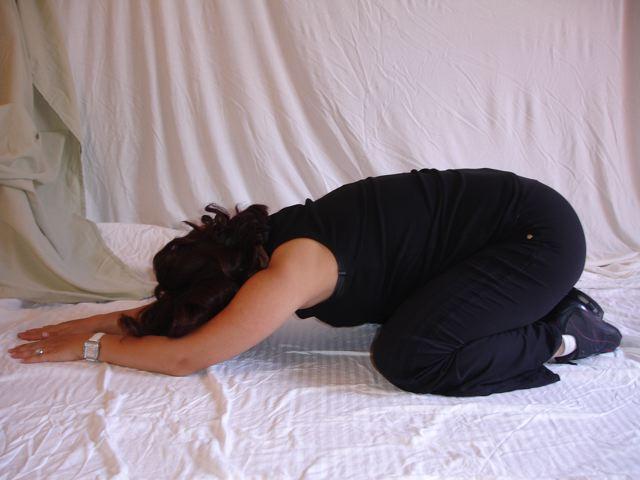What can a mother do to prepare her pelvic floor for pregnancy and childbirth?
First, you might be asking yourself “what is the pelvic floor”?
The pelvic floor is a group of muscles inside the pelvis that form a hammock from your pubic bone to your tailbone and from sit bone to sit bone on the sides. The function of these muscles are to stabilize your pelvis and spine, support your organs (bowel, bladder and uterus) and maintain continence. In pregnancy and childbirth, these muscles go through a lot of changes. The goal of this article is to try and achieve optimal pelvic floor function throughout pregnancy and after.
This article is separated by trimesters, but you should continue doing these activities throughout the pregnancy and add the new activity at the appropriate trimester. If you are unsure if you are doing these exercises correctly or need guidance, check to see if you have a pelvic floor physical therapist in your area. This article is not meant to diagnose or treat any conditions. If you have any pelvic/hip/tailbone pain, pain with intercourse, urinary or fecal incontinence, or prolapse, speak with your healthcare provider and seek out a pelvic floor physical therapist for further assessment.
1st Trimester:
Pelvic stabilization/strengthening exercises
- Relaxin levels are at the highest in the first trimester. Peaking at about 8-12 weeks. This hormone can cause excess ligamentous laxity. Adding pelvic stabilization and strengthening exercises can add internal support by strengthening the supporting musculature, which can lead to less sacroiliac, pubic symphysis and low back pain during pregnancy. In a systematic review of 23 articles, pelvic stabilization exercises were beneficial at decreasing low back and pelvic girdle pain in pregnancy (Bogaert et al., 2018).
- The updated exercise guidelines by American Academy of Gynecology (ACOG, March 2020) stated “Overall, the evidence suggests that aerobic and strength conditioning exercises should be encouraged before, during, and after pregnancy,” as long as one has a healthy, uncomplicated pregnancy and are then cleared by an OBGYN/Midwife to begin/continue an exercise routine. More information regarding absolute/relative contraindications to an exercise program are posted in the following link: https://www.acsm.org/blog-detail/acsm-certified-blog/2019/08/06/fit-pregnancy-guidelines-simple-guide
Awareness/connection to pelvic floor muscles
- This can be one of the hardest exercises for our patients to do. Here are some suggestions to try and connect with your pelvic floor:
- 1. Roll up a small towel and sit on it. Bring your awareness to the muscles inside your pelvis. When you do a kegel (ie. stop the flow of urine/close your vaginal entrance) can you feel the muscles in the pelvis squeeze or lift away from the towel? Next, relax/lengthen the muscles and you should then feel the muscles resting on the towel.
- 2. When sitting on the toilet, assess what the muscles feel like inside your pelvis (they should feel slightly contracted). Start urination and assess the differences in tension between the two (it should feel like the muscles are relaxed/lengthened)
- Kegels/pelvic floor contractions during pregnancy can be beneficial to support the growing weight of the baby and decrease risk of prolapse and incontinence. In a systematic review by Du et al., 2015, showed that women participating in a kegel strengthening program had a shorter first and second stage of labor. Knowing how to lengthen the pelvic floor is also important for labor, so practice both contracting and lengthening the pelvic floor. This will improve your coordination of the pelvic floor, which will help in labor and delivery, as well as postpartum recovery.
- It is important to note that not everyone should be doing kegels as an exercise. If you have signs or symptoms of pelvic pain or painful intercourse, speak with your pelvic therapist so they can tailor a specific program for you. Check out this article which goes into more detail about kegels during pregnancy:
https://feminapt.com/media-content/heather-jeffcoat-at-healthline/healthline-everything-you-need-to-know-about-kegel-exercises-when-pregnant
- It is important to note that not everyone should be doing kegels as an exercise. If you have signs or symptoms of pelvic pain or painful intercourse, speak with your pelvic therapist so they can tailor a specific program for you. Check out this article which goes into more detail about kegels during pregnancy:
- Diaphragmatic Breathing: This is another great exercise to help with pelvic floor awareness and can also help with relaxation and stress management.
- While lying propped up on pillows/sitting, place one hand on your belly and another on your chest. Inhale through your nose (you should feel your ribs move out to the side and also into your back/bra). You will also notice a slight rise of your abdomen. Then, exhale through your mouth.
- With inhalation, the pelvic floor muscles should lengthen and with exhalation they rebound
- For more information on diaphragmatic breathing check out this article: https://feminapt.com/blog/new-year-s-resolutions-for-your-pelvic-floor-breathe-correctly
- Normalizing bowel and bladder
- Progesterone rises in the first trimester, which can make constipation a common side of effect. Try to catch this early by making changes to your diet, exercise routine and posture during bowel movements (i.e. use of a squatty potty/footstool).
- Estrogen is also rising which is thought to increase blood flow. This could cause an increased urge to urinate. Watch the time between voids. If it's less than two hours, you may want to try some urge suppression techniques; For example, mental distraction by performing 5 quick kegels or deep breathing. This should help dissipate any sensation of urinary urgency, however, if you're still having the urge after 10 minutes, calmly find the nearest restroom to urinate. The increased urge typically subsidies in the second trimester and returns in the third trimester.
- Body mechanics
- Remember the hormone relaxin is especially high during this trimester, which puts you at risk of injury if you're not careful.
- Some easy tips to remember:
- Bend with your knees not your back
- Keeps objects close to your body
- Never lift and twist
- Kegel before you lift and grade the kegel based on how much weight you’re lifting (max contraction, for a heavy load or a mild contraction for a light load)
- Some easy tips to remember:
- Remember the hormone relaxin is especially high during this trimester, which puts you at risk of injury if you're not careful.
2nd Trimester
Flexibility
- Stretching the hips, spine and general pelvic floor stretches can help make pregnancy more comfortable. A great stretch for this is child’s pose.

Spreading your hips and knees apart to make room for the belly, keep the heels pressed to the bottom and reach the arms straight ahead. Hold for 30 seconds and breath.
Posture: As the baby grows, you may notice your posture starting to change.
- Some suggestions to try:
- Bring your ribs over your pelvis. This can help you reconnect to your pelvic floor.
- Make sure you are not squeezing/clenching your pelvic floor or butt muscles.
3rd Trimester
Perineal massage
- Perineal massage has been proposed to help lengthen and stretch the muscles in the perineum, thereby decreasing muscular resistance to stretch during delivery.
- In a systematic review by Beckmann et al ,2008 it was found that perineal massage reduced the chances of having a perineal tear or an episiotomy.
- How to do perineal massage:
- It is usually recommended to start perineal massage at 34 weeks gestation
- 1. Lie propped up on pillows with clean hands and trimmed fingernails.
- 2. Use a lubricant like olive oil, vitamin E oil or a water based lubricant.
- 3. Place your thumb inside the vagina 1-1.5 inches and push down towards the anus; as well as the sides until you feel a gentle stretch.
- 4. Hold this stretch for 60- 90 seconds and use your diaphragmatic breathing techniques.
- 5. Next, using a sweeping motion, massage the muscles in a U shape
- 6. Studies recommend 5-10 minutes of massage 3-6 times per week.
*** If your partner will be doing this massage, communication is key.
- It is usually recommended to start perineal massage at 34 weeks gestation
Addressing Instability/pelvic pain with use of a supportive or stabilization belt
- As the baby grows, you may start to feel instability through your low back, pelvis, sacrum or hips, which can produce pain. Using a belt to help with external stabilization can be helpful in this stage. If you are not experiencing any symptoms, it is best not to rely on any external support. There are different types of support belts that can be helpful based on your pain. This can be evaluated by a trained pelvic floor physical therapist or a therapist that specializes in pregnancy.
- A mechanical study by Mens et al., measured sacroiliac joint mobility in pregnant patients with a belt and found decreased sacroiliac joint laxity and improved stability with movement through the pelvis.
For pelvic floor rehabilitation after labor and delivery check out this article: https://feminapt.com/resources/published-articles/early-post-partum-recovery.
To schedule an appointment with one of our therapists, call us at (818) 873-1403 or use our online appointment form here.











